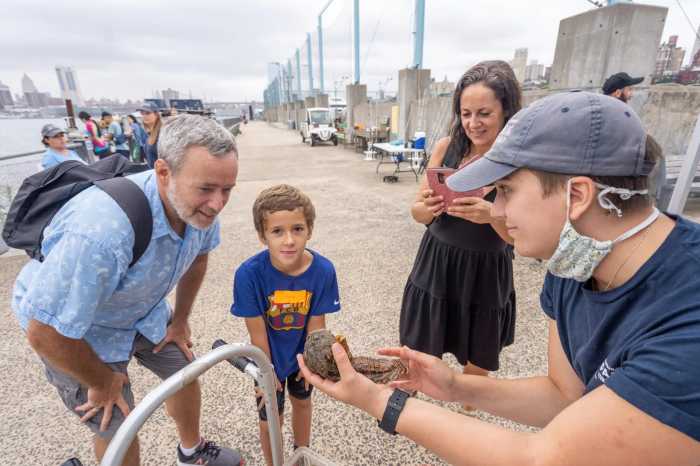Joseph Trigoboff says his new murder mystery,
"The Shooting Gallery" is loosely based on real events
culled over the course of eight years of research.
Set in present-day New York City, albeit a dirtier, grittier
Gotham, "Gallery" (Lyons Press, $19.95) takes Detective
Alvin Yablonsky – on the heels of a "perp" who murdered
a prominent investigative reporter and dumped him by Tavern on
the Green – everywhere from celebrity-filled fundraisers in Manhattan,
to the Queen restaurant on Court Street, to Nino’s restaurant
in Carroll Gardens, to a Coney Island flea market, to the Gowanus
Canal, where ruffians attempt to drown him.
"Brooklyn is in a renaissance, and I’m very happy it’s occurring,"
Trigoboff told GO Brooklyn, "but if they dredge the Gowanus,
my scene won’t be realistic anymore."
Trigoboff’s hard-bitten cop survives his canal swim and uncovers
crooked cops, a crooked judge, a crooked ex-Brooklyn borough
president and other morally compromised characters who are almost
more memorable than the bland, trying-to-do-the-right thing detective
who’s abused by everyone from the mayor, to the police commissioner
to his unappreciative lovers.
Trigoboff, an East New York native and former Carroll Gardens
resident, is quite candid and proud that he survived "90
street fights" and escaped the ’hood. But he seems even
more proud that these memories, incorporated into his first Yablonsky
mystery "The Bone Orchard," as well as the latest,
are of interest to publishers.
"When I met [my mentor and Poet Laureate] Norman Rosten,
I was writing poetry and other books, until a couple of guys
started talking about their childhoods," said Trigoboff.
"It occurred to me that when I started talking about East
New York and Brownsville, they were fascinated. Now I write what
I know: murder, corruption and crime."
He even claims that his family’s been fighting its way out of
tough neighborhoods for generations. "Our name started through
violence. The first Trigoboff walked into a tavern in Russia,
got into a fight and his bottom lip split – ’tri-gubov’ means
’three lips.’"
The author, who celebrates his 55th birthday on Aug. 3, said
Yablonsky’s memories of weapons he saw on the streets, like carpet
guns, were his own childhood memories.
"Only people in East New York had the carpet gun [the predecessor
of the zip gun]. It looked like a small crossbow – used in rumbles.
It had a trigger mechanism, along with a thick rubber band, and
they shot pile and pieces of linoleum. You would aim at noses
or an eye, and they lost a nose or an eye."
He also says the gang mentioned in "The Shooting Gallery,"
called SPONGE for Society for the Prevention of Negroes Getting
Everything, was "a real, top-secret gang of racist murderers"
who were well known and feared by him and his fellow students
at Thomas Jefferson High School.
At least in Trigoboff’s books, killers like those get nabbed
by Yablonsky, one file at a time.

























